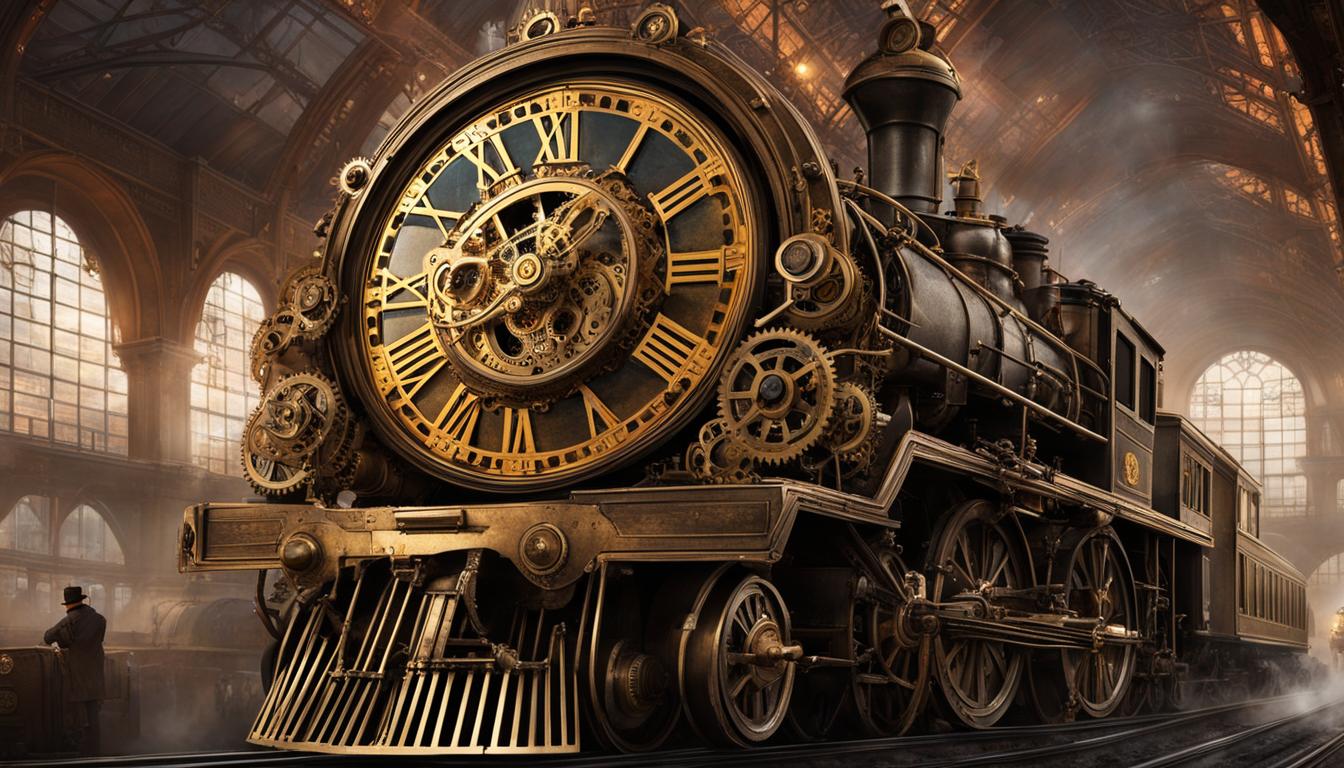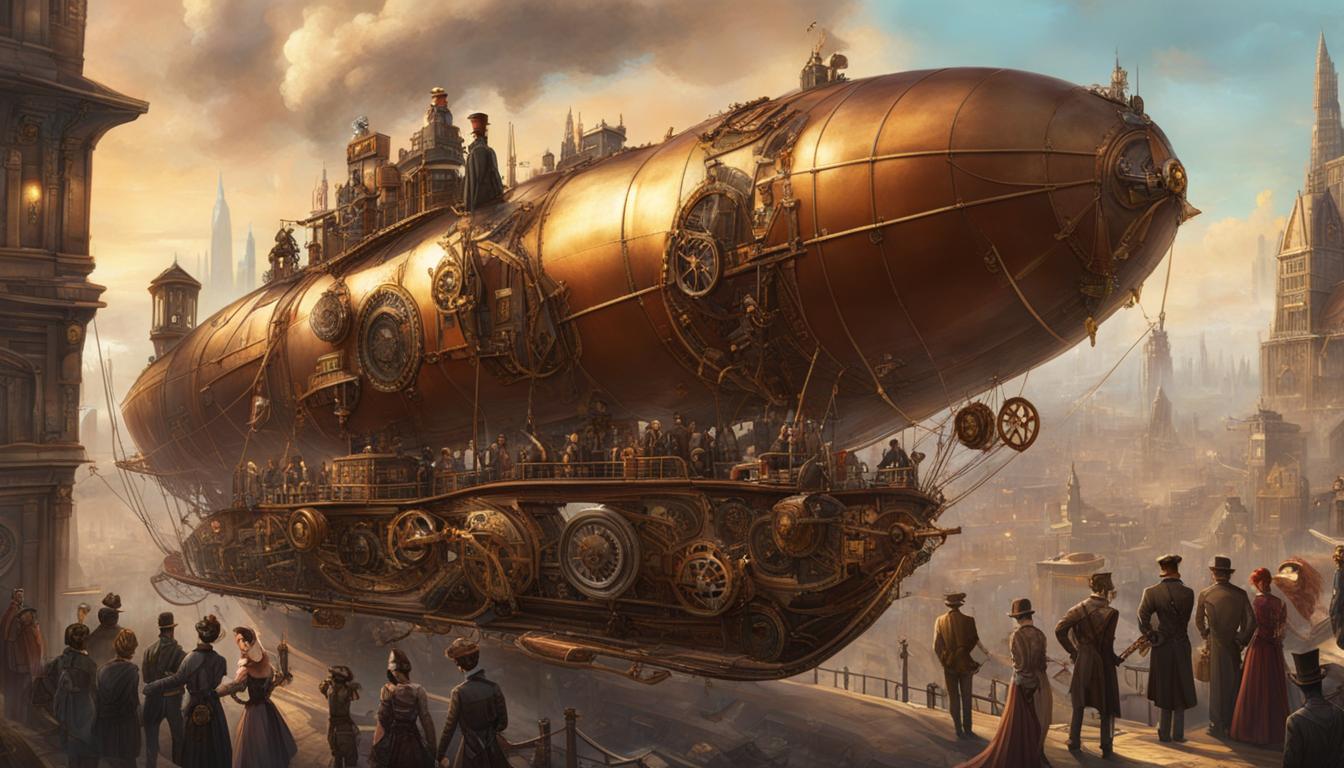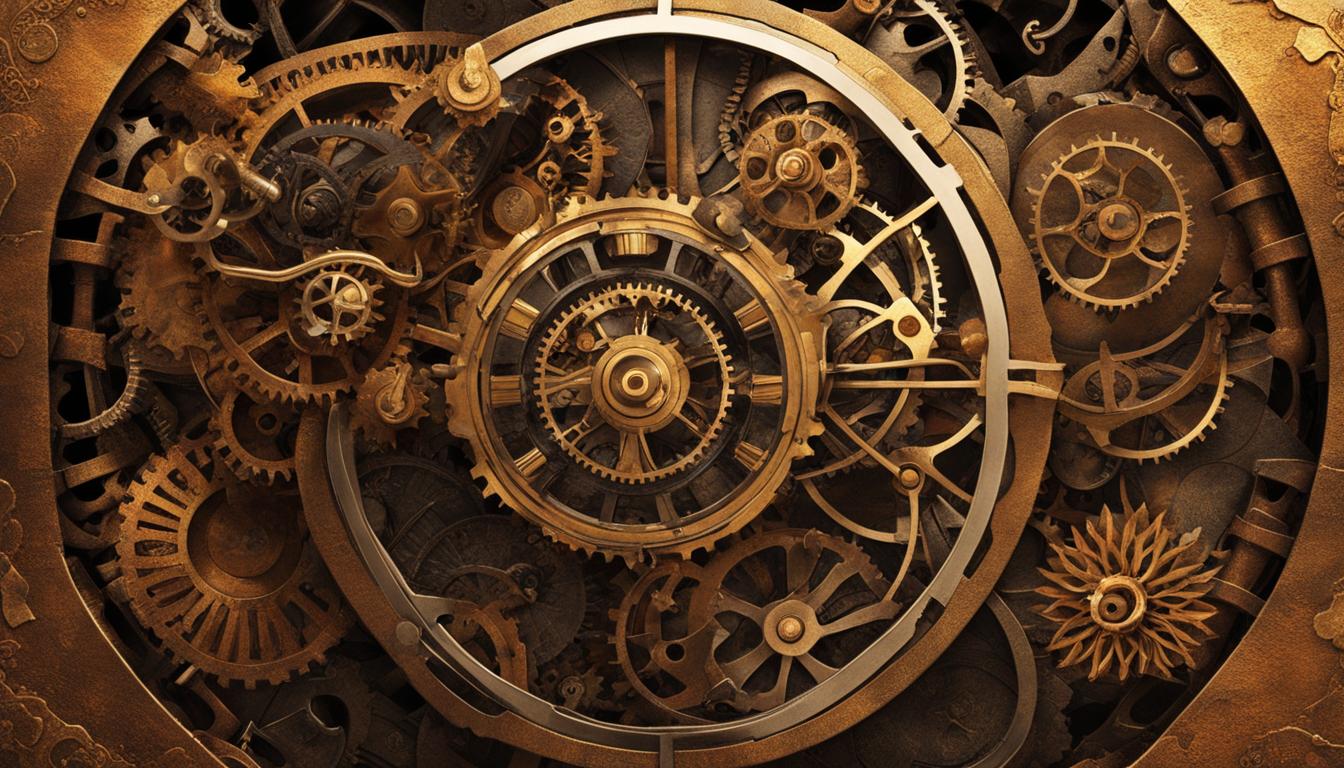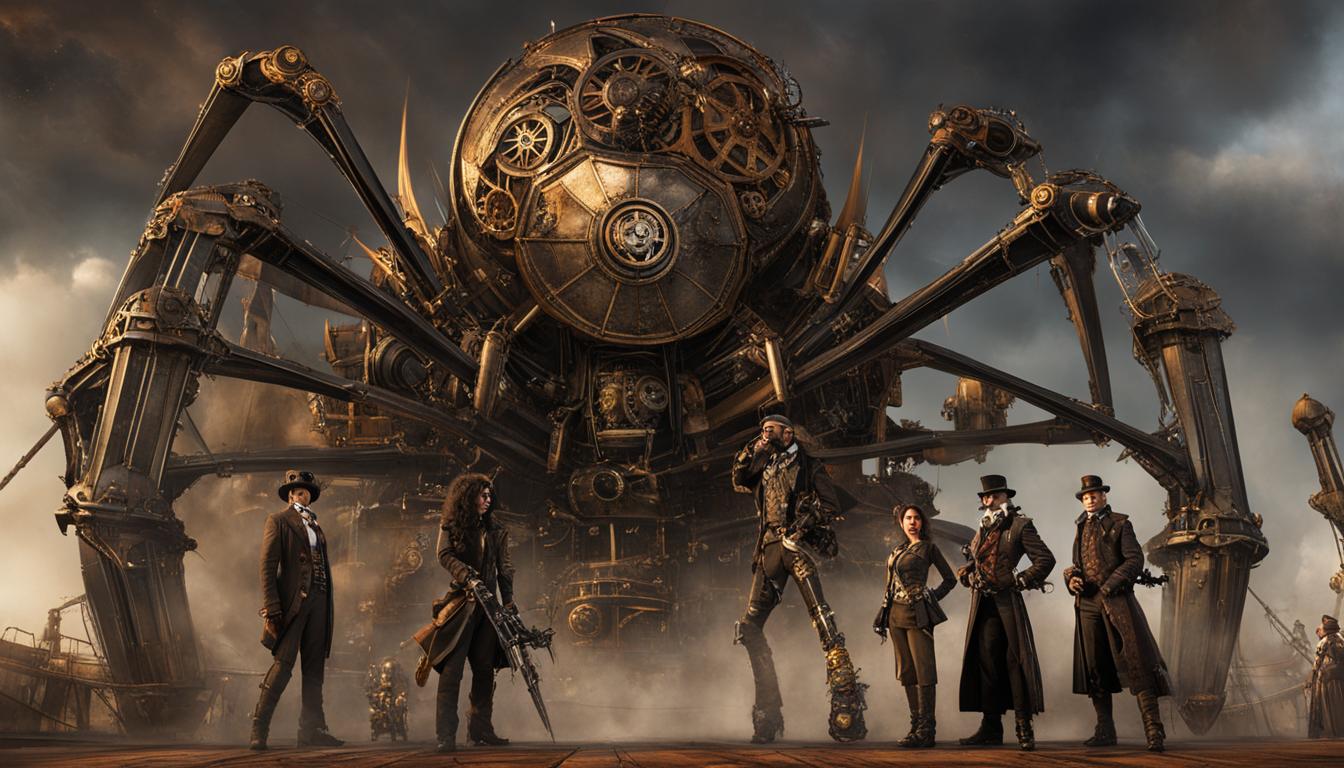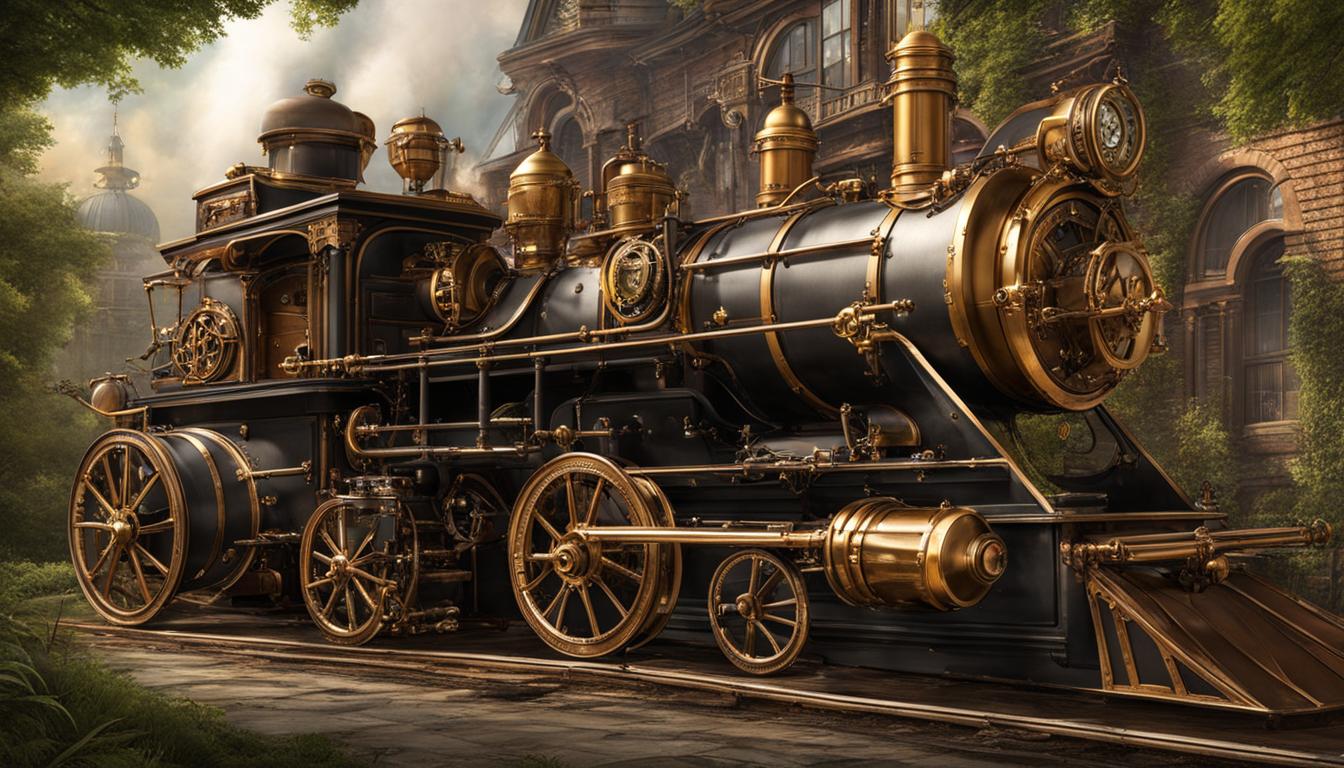Steampunk, the captivating subgenre that blends Victorian aesthetics with imaginative technology, offers a thought-provoking perspective on time. Through its literature and cultural expressions, steampunk challenges our traditional understanding of chronology and invites us to explore the fluidity of time itself.
Temporal themes permeate this unique genre, weaving intricate narratives that create alternate historical timelines. Steampunk’s literature often delves into the realm of retro-futurism, presenting a future shaped by technology rooted in the past. With its anachronistic elements and emphasis on the Victorian era, steampunk crafts a world where the past and future coexist in tantalizing ways.
By redefining our perception of time, steampunk sparks our imagination and encourages us to question the linear progression of history. It challenges us to embrace the malleability of time, opening up new realms of storytelling and intriguing possibilities.
Key Takeaways:
- Steampunk combines Victorian elements with imaginative technology to redefine our understanding of time.
- Temporal themes in steampunk literature create alternate historical timelines.
- Steampunk challenges traditional notions of chronology and invites exploration of the fluidity of time.
- The genre’s aesthetics blend anachronistic elements and an emphasis on the Victorian era.
- Steampunk presents a malleable history where past and future coexist in intriguing ways.
Time Travel in Steampunk Fiction
Steampunk fiction is known for its ability to transport readers to alternate historical timelines, and one of the key elements that allows for this exploration is the concept of time travel. In steampunk stories, time travel is often achieved through advanced technology or unconventional means, allowing characters to navigate through different eras and manipulate historical timelines. Through the use of time travel, authors create intricate plots and engage readers in thrilling journeys through time.
“The past is never really gone; it’s just waiting to be rediscovered.”
― Anonymous
Time travel in steampunk fiction blurs the boundaries between past, present, and future. It challenges traditional notions of chronology and invites readers to contemplate the possibilities of altering history. By incorporating time travel into their narratives, steampunk authors offer a fresh perspective on the concept of time and ignite the imagination of their audience.
Through time travel, steampunk fiction not only creates thrilling adventures but also provides a platform for exploring alternative historical scenarios. It allows authors to reimagine history, question established norms, and challenge the limitations of what is considered possible. The manipulation of historical timelines in steampunk fiction opens up endless possibilities for storytelling and invites readers to ponder the impact of historical events on the present and future.
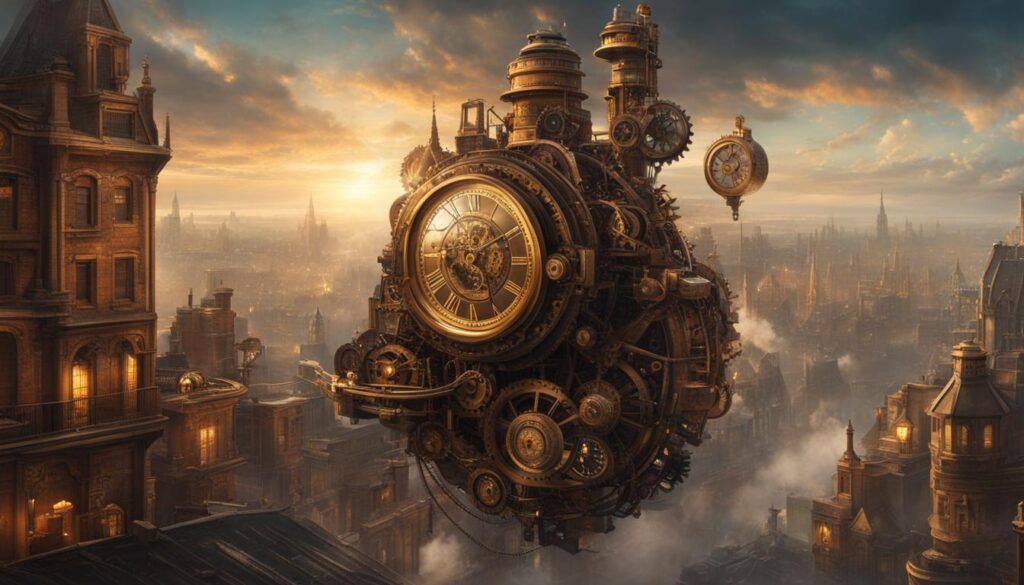
Steampunk’s Manipulation of Historical Timelines
| Steampunk Narrative | Historical Timeline | Time Travel Element |
|---|---|---|
| “The Clockwork Chronicles” | Victorian Era | Secret time-travel device |
| “Aetherpunk Adventures” | Post-Industrial Revolution | Steam-powered time machine |
| “The Steam Chronicles” | Alternate Victorian Era | Temporal rifts |
The table above showcases different steampunk narratives and their manipulation of historical timelines through time travel elements. Each story offers a unique twist on the concept of time and presents readers with fascinating possibilities. From secret time-travel devices to steam-powered time machines, these narratives exemplify the inventive nature of steampunk fiction and its ability to reshape history.
The Symbolism of Timepieces in Steampunk
Steampunk, with its unique blend of Victorian aesthetics and imaginative technology, places great importance on timepieces as symbols of the genre’s reinterpretation of the past and future. These timepieces, often depicted as intricate mechanical devices, serve as visual representations of the fusion of past and future within the steampunk universe.
Through their elegant design and functionality, steampunk timepieces capture the essence of the Victorian era’s fascination with clockwork mechanisms. They embody the innovative spirit of the genre by transforming traditional timepieces into works of art that provide a tangible connection to the past while hinting at a future driven by advanced technology.
Furthermore, the symbolism of timepieces in steampunk extends beyond their physical appearance. They serve as reminders of the fluid nature of time and invite contemplation of the possibilities that arise when past and future coexist. In steampunk literature and art, these timepieces often take center stage, serving as pivotal plot devices that enable time travel or manipulate temporal timelines, adding an element of mystery and adventure to the narrative.
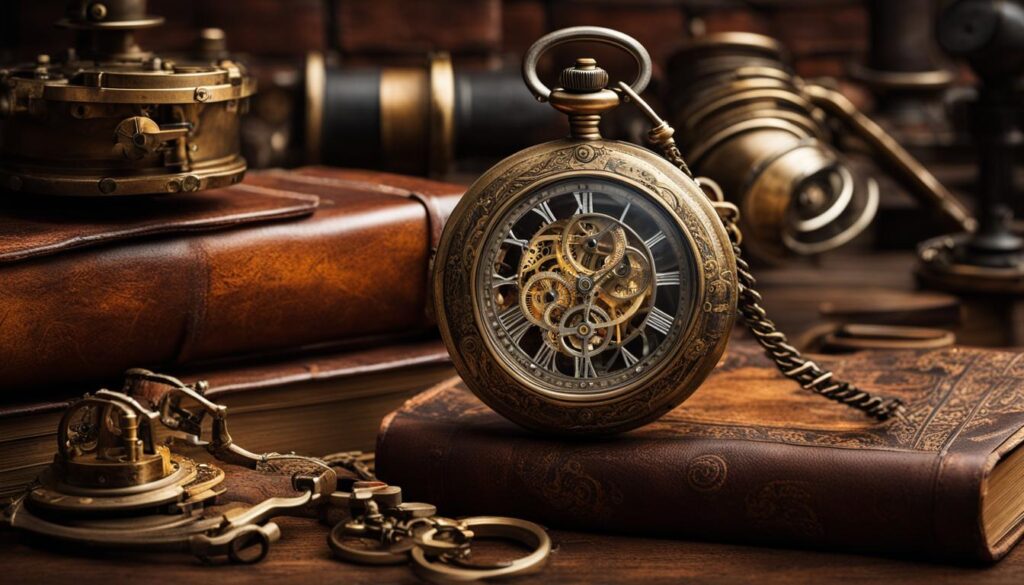
In conclusion, timepieces play a significant role in the symbolism of steampunk culture. These intricate mechanical devices not only represent the fusion of past and future but also embody the genre’s reinterpretation of time itself. By incorporating timepieces into their narratives, steampunk authors and artists challenge traditional notions of chronology, sparking the imagination and inviting readers to explore the fluidity of time.
Chronological Disruptions in Steampunk Tales
Steampunk literature is known for its ability to challenge traditional narratives by introducing chronological disruptions. Authors in this genre skillfully employ temporal shifts, flashbacks, and nonlinear storytelling techniques to create a sense of ambiguity and mystery. These disruptions reflect the genre’s fascination with time and its fluid nature, inviting readers to embark on a journey where past, present, and future intertwine in unexpected ways.
One of the ways steampunk narratives disrupt chronology is through the use of temporal shifts. Characters may find themselves transported to different eras, creating a disorienting effect that adds depth and complexity to the storyline. These shifts can create parallel timelines or explore alternative historical events, allowing readers to question the linear progression of time and imagine the possibilities of different outcomes.
Furthermore, steampunk culture embraces time-related metaphors that further enhance the exploration of temporal disruptions. The juxtaposition of past and future in steampunk tales serves as a metaphor for the human experience, inviting readers to reflect on their own relationship with time. Whether it’s the fusion of Victorian aesthetics with futuristic technology or the blending of historical events with speculative elements, steampunk offers a rich tapestry of symbols that provoke thought and ignite the imagination.
The Intricacies of Steampunk Time Travel
Time travel is a recurring theme in steampunk fiction, serving as a catalyst for the chronological disruptions that define the genre. Steampunk stories often feature characters who manipulate time through advanced technology or unconventional means, leading to intricate plots and fascinating adventures. By incorporating time travel, steampunk reimagines history and challenges our perception of cause and effect, inviting us to consider the consequences of altering past events.
From H.G. Wells’ “The Time Machine” to more contemporary steampunk novels, such as “Perdido Street Station” by China Miéville, time travel is central to the genre’s exploration of temporal disruptions. These narratives not only entertain readers with thrilling escapades, but they also encourage us to contemplate the nature of time itself. Through the lens of steampunk, we are prompted to question the linearity of history and examine how our actions in the present can shape the future.
| Chronological Disruptions in Steampunk Tales | Time-Related Metaphors in Steampunk Culture |
|---|---|
| Temporal shifts | Fusion of the past and future |
| Flashbacks | Blending historical events with speculative elements |
| Nonlinear storytelling | Reflection on the human experience of time |
| Time travel | Questioning the linearity of history |
Steampunk’s fascination with chronological disruptions and time-related metaphors sets it apart as a genre that challenges our understanding of time. By bending and reshaping history, steampunk narratives invite us to reflect on the malleability of time and the impact it has on our lives. Through its intricate storytelling techniques and thought-provoking symbolism, steampunk continues to captivate readers and redefine our relationship with the concept of time.
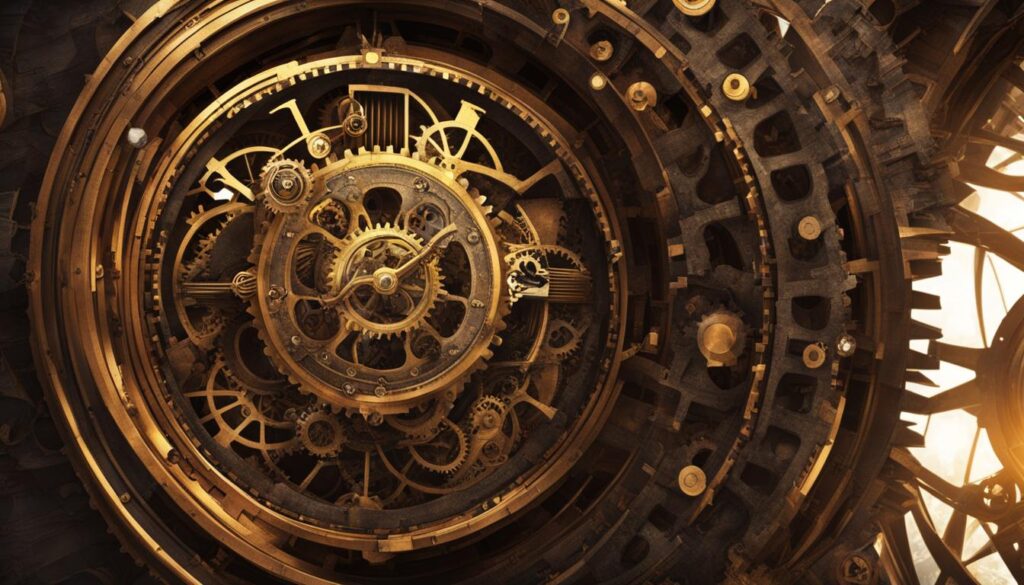
Conclusion
Steampunk is a genre that boldly challenges our understanding of time, inviting us to question traditional notions of chronology and embrace the concept of a malleable history. Through its literature and cultural expressions, steampunk reinterprets time in fascinating ways, offering a fresh perspective on the fusion of past and future.
In steampunk narratives, historical timelines are manipulated and reshaped, creating alternate realities where the boundaries between past, present, and future blur. Time travel becomes a thrilling adventure, allowing characters to explore new possibilities and rewrite the course of history.
Steampunk’s fascination with timepieces symbolizes the genre’s reinterpretation of time. These intricate mechanical devices represent the intersection of technology and time, embracing the Victorian era’s love for clockwork mechanisms and embodying the innovative spirit of steampunk. They stand as reminders of the genre’s ability to blend elegant design with functionality and challenge our perception of time.
With its chronological disruptions, nonlinear storytelling techniques, and time-related metaphors, steampunk sparks the imagination and invites readers to reflect on the fluid nature of time. By embracing the possibilities of an alternate reality, steampunk opens up new avenues for storytelling and redefines the very concept of time itself.
FAQ
How does steampunk redefine our understanding of time?
Steampunk challenges traditional notions of chronology and explores the fluidity of time itself through its literature and cultural expressions.
What is the role of time travel in steampunk fiction?
Time travel is a recurring theme in steampunk fiction, allowing authors to explore alternate historical timelines and create thrilling adventures.
How are timepieces significant in steampunk culture?
Timepieces symbolize the passage of time and the fusion of past and future in steampunk. They are reimagined as intricate mechanical devices that blend elegant design with functionality.
How do steampunk narratives disrupt linear timelines?
Steampunk stories often challenge chronological norms through temporal shifts, flashbacks, and nonlinear storytelling techniques, creating a sense of ambiguity and mystery.
What is the impact of steampunk on our perception of time?
Steampunk redefines our understanding of time by manipulating historical timelines, incorporating time travel, and sparking reflection on the concept of time in our own lives.

